Author Archives:Lydia Sampson

22
FebWriting Through the Years
 This past weekend I spent the entire time under my covers with the virus that masqueraded darn close to that of the flu. Waking from fitful sleeps, I’d ease out of bed, drop my aching legs on the floor, and plod down the hallway for cough medicine and pain reliever. I’d occasionally think about the laundry or chores I’d abandoned before I was struck by this nasty bug. Instead, weak and fog-brained, I’d find myself crawling back to bed.
This past weekend I spent the entire time under my covers with the virus that masqueraded darn close to that of the flu. Waking from fitful sleeps, I’d ease out of bed, drop my aching legs on the floor, and plod down the hallway for cough medicine and pain reliever. I’d occasionally think about the laundry or chores I’d abandoned before I was struck by this nasty bug. Instead, weak and fog-brained, I’d find myself crawling back to bed.
The early deadline for our weekly newspaper column, From the Library, passed on Friday night, as did the hard-and-fast Sunday evening deadline. I woke Monday morning and realized that I was soon going to miss writing my week’s assignment for the very first time in nine years. And it just so happened to be my 250th column.
This week February 11 marked the beginning of our 10th year of writing for the Norwood Transcript & Bulletin (it was the Daily News Transcript when we first started writing the From the Library column in 2009. After writing a half dozen weekly columns myself in 2009 (including the dreaded deadlines), I enlisted the help of other professional librarians at the Morrill Memorial Library. Library interns and other department staff have taken turns writing with their own voices and styles and since 2009 many of them have written regularly. (In fact, one of the requirements for joining our staff has been an ability and enthusiasm to contribute to the weekly newspaper column).
In total, thirty-one library staff and interns have written 463 columns since February 2009. That’s about 450,000 words. (Or as many words as Lord of the Rings by J.R.R. Tolkien.) On average, a novel is somewhere between 60,000 and 80,000 words. Doing the math, you’ll find we are a prolific bunch of writers.
Over nearly a decade, I’ve written about birds and bees (separately), dogs I’ve loved – a dog I’ve lost. I’ve written about disasters (earthquakes, tsunamis, firestorms, and sinking ships) and triumphs (Oscars, homeschooling, the Red Sox, and Big Papi’s visit to our library). Over the past nine years, my not-so-private life has seen the weddings of all four of our children and the subsequent amazing births of six grandbabies in three years. It saw the graduation from high school of our eldest grandson. My columns have described camping escapades to Vermont and travels within the country (Chicago, Florida, Indianapolis, Washington, DC, and New York) and abroad (Ireland, Mexico, Italy and Hawaii.) I’ve written about the personal sadness of divorce, of losing a child, and the national unimaginable tragedies like Sandy Hook. Column topics have been about the joys of friendship, food, reading and movies. Or about the Morrill Memorial Library, its architecture and history and of literacy and librarianship.
I submitted my first column for the February 11, 2009 edition of the newspaper. I highlighted the Musical Sundays program and the February 14 concert featuring Love Songs. I’d just become the library director four months earlier, starting my job on September 22. I’d spent the previous week in New York City and watched Lehman Brothers employees exit their offices on Seventh Avenue on September 15. The financial firm, with over 25,000 employees world-wide, declared bankruptcy that day. Started in 1844, Lehman Brothers had survived financial upheaval – the Great Depression, the World Wars, the Russian default – but it could not survive the subprime mortgage disaster that barreled its way through 2007 and 2008, leaving financial ruin in its wake.
In December of 2008 Bernie Madoff confessed to his great Ponzi scheme, topping off that disturbing year of economic upheaval. The reality of this financial pain was seen around the country, including in the towns and cities of Massachusetts. Norwood saw its own economic squeeze and as director, I navigated the cuts to the library’s budget and State Aid to Public Libraries grant. The worst of the years came later when budget cuts forced the library to close Sundays in the fall 2011 and winter of 2012, eliminating our Musical Sundays program. Yet, from 2009 through 2017, we increased programming by 300%. When once we offered 40 adult programs per year, that number has risen to over 225. Children’s programs have nearly doubled in the same time period. As a library we continue to thrive, weathering the storms much like we in Massachusetts always manage to do. And we’ve written about those successes in our From the Library column.
We are proud to have won two awards for our newspaper columns from the Massachusetts Library Association. The biannual MLA PR (public relations) Awards recognize libraries for their submissions for marketing, public relations, media and graphics work during the previous two years. Our library submitted a representative 25 columns written in 2013 and 2014 and again for those written in 2015 and 2016. We won first place in the News category at the awards ceremonies in 2015 and 2017. Choosing only 12-13 of the 52 columns written during a year was difficult as we were forced to leave the majority of columns on the “cutting room floor.”
All nine years of our columns (2009-2017) are printed and bound in annual editions of the 50+ columns. These spiral-bound editions are available at the Reference Desk. Columns can be found online at Norwood.WickedLocal.com (those published after the merger of the Daily Transcript and the Bulletin in 2009) and are also posted to the Library’s website each week. A complete archive of all 465 columns can be found on a searchable blog at fromthelibrarycolumn.blogspot.com.
It’s a pleasure writing for our local newspaper – a collaboration that spotlights our library, its resources, and our librarians. “Neither snow nor rain nor gloom of night stays” the library’s writers from writing each week. Or weariness from the flu.
Charlotte Canelli is the library director of the Morrill Memorial Library in Norwood, Massachusetts. Read Charlotte’s column in the February 22, 2018 edition of the Norwood Transcript and Bulletin.
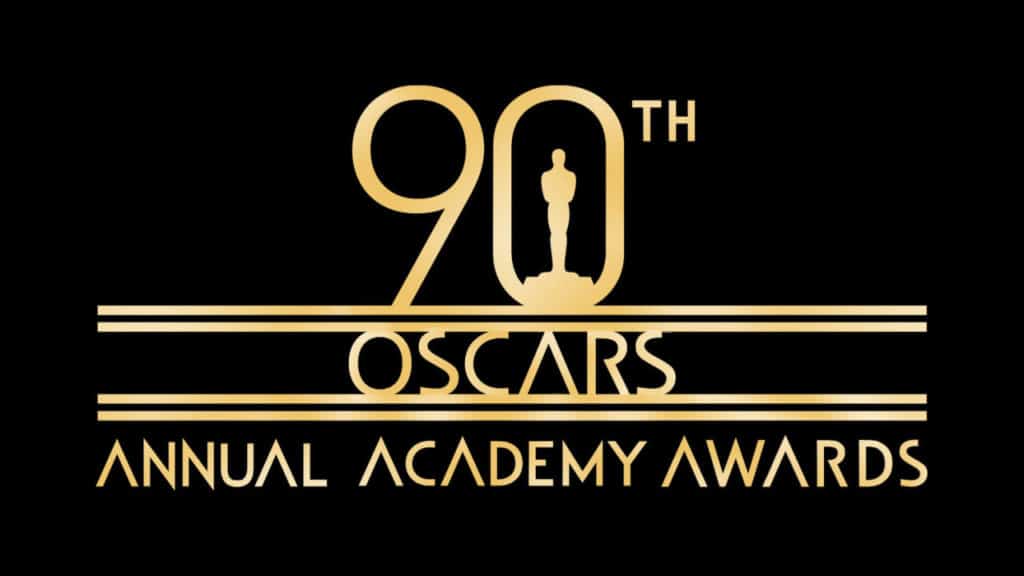
8
FebRead the Books that Inspired the 2017 Films
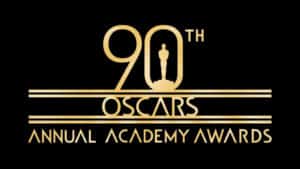 This year the 90th Academy Award nominations were announced a few weeks ago and, as usual, there are dozens of nominations. The final voting won’t begin for a few weeks on February 20. The Oscars will be awarded when they are televised on March 8th in Los Angeles and Jimmy Kimmel will host for the second time.
This year the 90th Academy Award nominations were announced a few weeks ago and, as usual, there are dozens of nominations. The final voting won’t begin for a few weeks on February 20. The Oscars will be awarded when they are televised on March 8th in Los Angeles and Jimmy Kimmel will host for the second time.
At least thirteen of the nominated films in all 24 of the categories, including Best Picture, Actor and Actress, are based upon books, or have spawned books. Most of the DVDs for these films have not yet been released, yet all of the books are in the library. They can be found on the library’s fiction or non-fiction shelves, on the Speed Read shelf, and on a special display devoted to all nominated films. Six of these nine films were nominated for Best Picture along with eleven nominated for best actors and actresses. Others were nominated in the Best Song, Best Director, Best Cinematography or other categories.
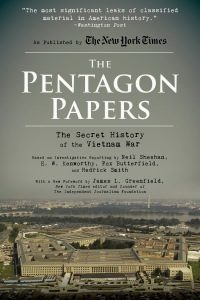 One of the most-talked about films of 2017 is The Post (starring Meryl Streep as Katharine Graham and Tom Hanks as Ben Bradlee), based on the Pentagon Papers. The 1971 drama of the papers leaked by Daniel Elsberg has been recently referred to as the WikiLeaks of its day. While the New York Times was the newspaper that defied President Nixon in 1971, and exposed the secrets of the Johnson administration and the secret government study of the Vietnam War, it was the local paper, The Post, headed by Katharine Graham that got its hands on the Papers and printed the stories about them. Both newspapers had to risk the ensuing battle in Supreme Court and their reputations. The most recent (2017) publication of The Pentagon Papers is an informative account writted by five authors – historians, political scientists and journalists. It includes chapters on the history and build-up of the Vietnam War during the Eisenhower, Kennedy and Johnson administrations. Two of the authors, Neil Sheehan and James Greenfield, worked secretly with Daniel Ellsberg to release the Papers. Director Steven Spielberg (not up for an Oscar this time) will probably be thrilled with a Best Picture win.
One of the most-talked about films of 2017 is The Post (starring Meryl Streep as Katharine Graham and Tom Hanks as Ben Bradlee), based on the Pentagon Papers. The 1971 drama of the papers leaked by Daniel Elsberg has been recently referred to as the WikiLeaks of its day. While the New York Times was the newspaper that defied President Nixon in 1971, and exposed the secrets of the Johnson administration and the secret government study of the Vietnam War, it was the local paper, The Post, headed by Katharine Graham that got its hands on the Papers and printed the stories about them. Both newspapers had to risk the ensuing battle in Supreme Court and their reputations. The most recent (2017) publication of The Pentagon Papers is an informative account writted by five authors – historians, political scientists and journalists. It includes chapters on the history and build-up of the Vietnam War during the Eisenhower, Kennedy and Johnson administrations. Two of the authors, Neil Sheehan and James Greenfield, worked secretly with Daniel Ellsberg to release the Papers. Director Steven Spielberg (not up for an Oscar this time) will probably be thrilled with a Best Picture win.
A handful of other films based on other historical moments were nominated for awards this year. The Miracle of Dunkirk: The True Story of Operation Dynamo and The Darkest Hour: How Churchill Brought England Back from the Brink were published in 2017 and are the history behind the films. Another, Thurgood Marshall: American Revolutionary by Juan Williams was first published in 1998 and inspired the 2017 film, Marshall. It is a biography of Justice Marshall, his victory in the Brown v. Board of Education (1954), and his subsequent appointment to the Supreme Court. The film stars Charles Boseman and Kate Hudson and is nominated for Best Song, “Stand Up for Something.”
Another biographical film, The Greatest Showman starring Hugh Jackman, is nominated for best song, “This is Me.” The film follows the life of P.T. Barnum. Obviously, the book that inspired the film is Barnum’s autobiography Barnum’s Own Story, actually published in 1927.
Victoria and Abdul: The True Story of the Queen’s Closest Confidant by Shrabani Basu was published in 2011. Abdul, and Indian Muslim, arrived in England as a waiter at Queen Victoria’s Golden Jubilee. What followed is a story of tender love between them.
John Pearson wrote a biography of the Getty family, Painfully Rich: The Outrageous Fortune and Misfortunes of the Heirs of J. Paul Getty in 1995. The book included the anguished tale of the kidnapping of grandson Paul Getty and the refusal by his grandfather to pay the ransom. The film, All the Money in the World, is based on Pearson’s book, republished as a movie tie-in of the same name. Molly’s Game was also published in 2017 as the movie tie-in. It stars Jessica Chastain, Idris Elba and Kevin Costner and is the memoir of Molly Bloom who “gambled everything, won big, then lost it all.”
The Disaster Artist is a most ironic choice for a nomination. The film was nominated for Best Adapted Screenplay. Interestingly, it is a film about a disaster of a 2003 film that cost over $6 million to make: The Room earned $1800 at the box office. The book, The Disaster Artist by Greg Sestero is subtitled My Life Inside the Room, the Greatest Bad Movie Ever Made. And IT’S up for an Oscar! (James Franco was snubbed for a Best Actor nomination due to allegations of sexual misconduct.)
Best Picture nomination, The Shape of Water, was followed by a 2018 novelization by producer and director, Guillermo del Toro and his co-author Daniel Kraus. The publication of the screenplay of Three Billboards Outside Ebbing, Missouri by Martin McDonagh followed the release of the film starring Frances McDormand and Woody Harrelson. That film is up for seven Oscars, including ones for both McDormand and Harrelson. It is the story of a mother’s frustration that there has been no resolution about the death of her daughter and her struggle with the local police force.
Two novels inspired 2017 films: Mudbound by Hillary Jordan, an international bestseller in 2008 and Call Me by Your Name by André Aciman (2007). Mudbound was the debut work that earned Jordan the Bellwether Prize for Fiction. Aciman is a professor of comparative literature at CUNY New York. Mudbound is a drama of hatred in the South. Call Me By Your Name is a “powerful romance.”
Those of us who stayed up late last February 26 – until the last minute of the Academy Awards ceremony – are hoping there won’t be THAT drama this year. As I prepared to turn off my TV, I watched dozens of people on the Dolby Theater stage in a state of confusion. LaLa Land had been announced as Best Picture when it was suddenly divulged that Moonlight had actually won the award. Warren Beatty tried to make sense out the error, and LaLa Land producer Fred Berger exclaimed on the microphone “We lost by the way.”
I chuckled as I made my way up to bed. My husband Gerry had given up at least an hour earlier. He’s just not THAT into films. Or Academy Awards. I shook my head as I climbed into my side of the bed mumbling something about having witnessed an unbelievable mind-boggling mix-up of the Hollywood kind. Gerry didn’t even wake up.
Charlotte Canelli is the library director of the Morrill Memorial Library in Norwood, Massachusetts. Read Charlotte’s column in the February 8, 2018 edition of the Norwood Transcript and Bulletin.

1
FebWhat Comes Next?
 When people think about retiring, their first thought is often, “Well, what will I do?”
When people think about retiring, their first thought is often, “Well, what will I do?”
Some people are eager to retire because the demands of their jobs become exhausting as they get older. The elementary classroom teacher and the hospital nurse come to mind. Even those who are looking forward to leaving their work are wondering what they will do. This seems to be a universal question, whether one thinks about it long before retiring or after the actual transition from work to retirement. In talking to a number of friends who have been retired for varying periods of time, I found a wealth of creative ideas for finding rewarding pursuits in this new phase of life. Here are some of them:
A very useful book that offers help in making this transition and even talks about what to do in the first 30 days is The Retirement Boom: An All-Inclusive Guide to Money, Life, and Health in Your Next Chapter by Catherine Allen and others. This book is helpful in thinking through all the important issues one faces in retirement and planning ahead for them. Some intriguing chapter titles are: “Renegotiating Life at Home,” Simplifying Your Life and Living a Life of Passion,” and “Making Your Money Last.” The authors’ major recommendation upon retirement is to take time for oneself and to reconnect with friends. After a lifetime of work, most people need a chance to decompress, to reflect on what they want in the coming years, and to focus on taking care of their bodies and health. Other helpful books include Get the Most Out of Retirement: Checklist for Happiness, Health, Purpose, and Financial Security by Sally Hurme, and How to Make Your Money Last: The Indispensable Retirement Guide by Jane Bryant Quinn.
Travel is high on the list of priorities for many retirees. Although people prefer to travel with a spouse or a friend, there are also other options if that’s not possible. A number of travel companies offer small group trips all over the world. Eldertreks is an adventure travel company for those over 50 that allows one to choose an activity level from easy to challenging and an adventure style from cultural to diving to photography. Other active vacations are offered by companies like Vermont Bicycle Tours (VBT), which offers tours worldwide that include combinations of activities, like biking, hiking, and kayaking (with the option of electric bikes) and bike and barge river trips. Road Scholar (formerly called Elderhostel) offers educational travel in 150 countries and provides lectures and guides to help participants learn about each location. Untours is a company that offers something unique – independent travel with support. An “Untour” provides a private apartment or cottage in the chosen location, a rental car, assistance on arrival and departure, a free cell phone, and planning advice and support throughout your stay, all for a very reasonable cost. These are but a few of the numerous travel companies that will happily take your business.
Volunteering opportunities are available in the schools, environmental organizations, political action groups, Public Radio stations such as WBUR and WGBH, and many other organizations. Tutoring adults in literacy skills – English as a Second Language (ESL) or reading and writing – is a very rewarding activity, some say the most rewarding volunteer work they’ve done. Free training and support for this work is offered by the Literacy Program at the Norwood Public Library twice a year.
Child Care – Many retirees who love children or have grandchildren become involved with babysitting on a regular basis. They may commit to a regular schedule, which has the pros and cons of a part-time job, or being “on call” to help out. Many other people prefer lots of visiting time with grandchildren, without the commitment of a regular schedule. Either way, one of the pleasures of retirement for many is the opportunity to spend more time with grandchildren.
Household projects — Retirement provides the time to tackle long-postponed organizing at home. In short, this is a chance to simplify one’s life. Decluttering/downsizing after years of accumulating is a goal for many. Out with clothes held onto for 20 years in hopes they’ll come back into style. Time to clean out the belongings of adult children who have stored their life’s possessions in their childhood rooms (if you haven’t succeeded in persuading them to do it themselves). For some, there’s the project of organizing a lifetime of photographs, or making plans to remodel a room. In retirement, there’s finally the time to work on projects one didn’t have energy for when working full time.
Hobbies and new learning – Retirement is an ideal time to pursue new or deferred interests. Many people choose to learn a musical instrument, take up photography, do art projects, go birding, begin a writing project, or join book groups. Retirees have time to take better care of themselves (and often need to). One can join a gym, take more walks, or attend a cooking class. There are many opportunities for lifelong learning courses designed for older people, such as those offered at Wellesley-Weston Lifetime Learning. Evergreen at Boston University, and community Adult Education programs.
The following thoughts were offered by a good friend who has been retired for several years: “Be open to new things, start with a few. Take a class (a good way to meet people). Build slowly, don’t rush into things. Keep a balance. Remember that everyone finds their own way.” One of the greatest pleasures of being retired seems to be finally having time flexibility and leisure time, a chance to start the day with a cup of coffee while reading the newspaper. As we get older, we need more time to reflect, to savor our experiences, to slow down a bit and smell the roses.
Bonnie Wyler is an Outreach and Literacy Librarian at the Morrill Memorial Library in Norwood, Massachusetts. Read Bonnie’s column in the February 1, 2018 issue of the Norwood Transcript and Bulletin.
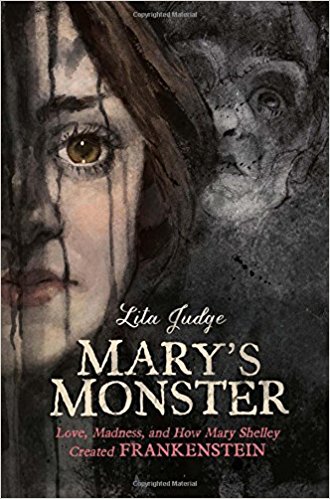
25
JanShelley’s Frankenstein
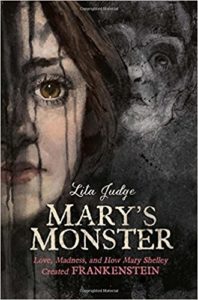 I’m here to confess that I’ve never read Frankenstein, the classic work of literature that just celebrated its 200th birthday. I’m guilty of believing some of the myths about the book.
I’m here to confess that I’ve never read Frankenstein, the classic work of literature that just celebrated its 200th birthday. I’m guilty of believing some of the myths about the book.
There are many misconceptions about Frankenstein. First, author Mary Shelley’s Frankenstein’s monster was not a zombie, pieced together and connected by bolts. Nor is he green in color that films and cartoons have portrayed. This eight-foot tall repulsive creature had skin in yellow tones that tightly fit a body of veins and muscles. His eyes glowed, his teeth shone white and emphasized his long black hair and black lips. Most importantly, Frankenstein is not the monster, but it is the name of the scientist who created the monster who was never named in the book.
Mary Wollstonecraft Godwin Shelley was the daughter of philosophers. Her mother Mary Wollstonecraft, an author herself, was one of history’s founding feminists, writing and arguing that women are not inferior to men but women historically lacked the education afforded their male counterparts. Wollstonecraft died only eleven days after giving birth to her infant daughter.
Although her father remarried, Mary felt overshadowed by his two younger children. At the age of 14 she attended a boarding school for six months, however her father’s debt and failed publishing business allowed for no more formal schooling. Mary did have the unique and fortuitous advantage of a homeschool experience in her father’s library. She also traveled with her father during educational trips, and spent much time conversing with his many educated and worldly colleagues. Her father guiltily admitted that while he had not followed the pedagogy of his intelligent and feminist wife who died after childbirth, her daughter Mary received a valuable and complete education.
Mary Shelley conceived of the story of Frankenstein (subtitled The Modern Prometheus) when she was only 18 years old. During a scandalous affair with one of her father’s followers, Percy Shelley, she traveled to Europe and gave birth to a Shelley’s child. It was that rainy summer in Switzerland that their friend and fellow traveler, poet Lord Byron, proposed that they all spend their time writing ghost stories. Wrestling with the idea, Mary imagined a corpse being reanimated. What started as the short story of Frankenstein’s monster was transferred to paper over the next two years.
Percy Shelley and Mary married in 1816 after the suicide of Shelley’s wife. Mary gave birth to two other children but all of her three first children perished soon after birth. In1818, her book Frankenstein was published anonymously and actually thought to be written by Mary’s husband. Her fourth child, born in 1919 was a son named Percy Florence. His birth pulled Mary out of a depression she suffered since losing her infants in 1815, 1816 and 1817.
Her husband Percy Shelley died in a boating accident in 1822 and afterwards Mary devoted her life to writing and raising her surviving son. Although she was famously known for Frankenstein, she did write other successful novels including Mathilda, Lodore and Falkner. The second edition of Frankenstein bore her name as author in 1823.
Reading about Frankenstein, one discovers that while it began as a ghost story contest, it can also be considered a gothic horror story, science fiction, or a treatise of the weaknesses of humans who fool around with science, not understanding the consequences. Frankenstein is horrified at the monster he created in with body parts and electricity in his laboratory. It’s a story of an incredible loneliness, a failed search for companionship, and a terrible knowledge that one can never fit in.
The public radio show Science Friday, aired by over 350 NPR stations, offers seasonal book clubs with conversations, podcasts, and more. This winter’s book club is Frankenstein and participants are reading a special edition annotated “for scientists, engineers, and creators of all kinds.”
There are probably hundreds of editions of Frankenstein that have been published in the past 200 years. The Science Friday choice is a cooperative publication between the Massachusetts Institute of Technology Press and Arizona State University. It is available through the Minuteman Library Network (our library has a copy); however, Arizona State University and MIT have made it available in open access as a PDF (portable document format.) It’s available on the MIT Press website.
The Annotated Frankenstein, edited by Susan Wolfson and Ronald Levao in 2012, is a perfect first reading of edition with illustrations and commentary by professors who have taught the novel. The NEW Annotated Frankenstein edited by Leslie Klinger and published in 2017 features over 200 illustrations and nearly 1,000 annotations. The Graphic Revolve: Common Core Editions published a graphic novel version of Frankenstein in 2014. Frankenstein: The Graphic Novel was adapted for younger children.
There are over 300 items in the Minuteman Library Network attributed to Mary Shelley’s Frankenstein, including DVDs and non-fiction works devoted to Mary Shelley and her work. The Monsters: Mary Shelley and the Curse of Frankenstein by Dorothy and Thomas Hoobler is a biography of Mary that juxtaposes the tragedies of her life against her success as a writer. A new graphic biography of Shelley will be on library shelves at the end of January: Mary’s Monster: Love, Madness and How Mary Shelley Created Frankenstein by Lita Judge. The book will be a welcome addition to the others with over three hundred pages of black-and-white watercolor illustrations.
The power of Mary Shelley’s Frankenstein is obvious. Shelley’s passions and griefs were transferred into her first, and most famous, work much like the electricity that charged Frankenstein’s corpse to give it life.
Charlotte Canelli is the library director of the Morrill Memorial Library in Norwood, Massachusetts. Read Charlotte’s column in the January 25, 2018 edition of the Norwood Transcript and Bulletin.

18
JanRevisiting Ayn Rand
 Last summer, I cleaned out a bookcase at home and came across a paperback copy of Atlas Shrugged by Ayn Rand from my early college days. It has followed me from my dorm room in the 60’s, to my parent’s home, and thru 2 moves in my married years. During the busy years of raising children and working, it sat forgotten on the shelf. What made it special was that it was personally autographed by Ayn Rand when I attended one of her lectures while in college. I don’t remember what the lecture was about nor do I remember meeting her. I wish I did. She was a very vocal and controversial political activist during the turbulent 60’s and her book, Atlas Shrugged, was as controversial as she was. The chance to see and hear her speak in person would have been a must.
Last summer, I cleaned out a bookcase at home and came across a paperback copy of Atlas Shrugged by Ayn Rand from my early college days. It has followed me from my dorm room in the 60’s, to my parent’s home, and thru 2 moves in my married years. During the busy years of raising children and working, it sat forgotten on the shelf. What made it special was that it was personally autographed by Ayn Rand when I attended one of her lectures while in college. I don’t remember what the lecture was about nor do I remember meeting her. I wish I did. She was a very vocal and controversial political activist during the turbulent 60’s and her book, Atlas Shrugged, was as controversial as she was. The chance to see and hear her speak in person would have been a must.
Ayn Rand was born in Russia in 1905 and suffered very negative effects of life under communistic rule until she received permission to visit relatives in Chicago in 1925. She vowed never to return to Russia and continued to live and work in Hollywood. I believe Ms. Rand was afraid that communism would follow her to America, and she used her writings and lectures to warn of its dangers. America in the 60’s was in turmoil; we were in the midst of the unpopular Vietnam War. In fact, one of reasons they told us we needed to go to war was to fight communism.
I decided to read or reread Atlas Shrugged. A few pages into it, I was sure that I either had not read it previously or certainly had not gotten very far into the 1,000+ pages.
It is a fictional novel that reflects Rand’s philosophy, Objectivism, but it is also a mystery of sorts. The reader is compelled to plow thru the 1,000+ pages to find out who John Galt really is.
Her major characters embody the traits of her philosophy and are in conflict with the world they live in. The principle of Ms. Rand’s Objectivism is multifaceted and complex. In her own words, “My philosophy, in essence, is the concept of man as a heroic being, with his own happiness as the moral purpose of his life, with productive achievement as his noblest activity, and reason as his only absolute.”
A comprehensive and detailed book about Ayn Rand, her life, her works and her philosophy is Ayn Rand and the World She Made by Anne C. Heller. It’s a must read for anyone interested in learning more about Ms. Rand.
I am sure that if Ms. Rand were alive today in this tumultuous political climate, she would again be a vocal and very controversial voice. In the meantime, her novels live on and speak for her. I’m glad I found, dusted off the pages, and read Atlas Shrugged. It was thought provoking, challenging and entertaining all at the same time.
Norma Logan is a Literacy Volunteer Coordinator at the Morrill Memorial Library in Norwood.
